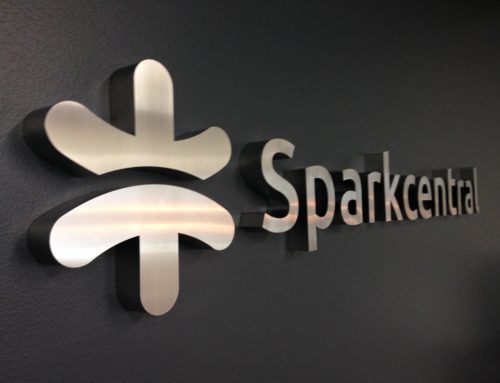 The Signs for your business are the first thing your customers see, so make them great!
The Signs for your business are the first thing your customers see, so make them great!
When thinking about signs for business you have to understand that every business is different, but in many ways they are the same. One way that businesses are the same is that they all should have signs. Unless you are a home business, you will have a space where work can be done by you and your employees. Many businesses will have customers visit their location. Some businesses will have large buildings or warehouses, and some are on the 42nd floor of a downtown skyscraper. Some businesses are on the corner on Main Street and others are along a busy highway. Regardless of your business there are 5 types of signs that every business should consider.
Exterior Signs
Exterior signs are signs are outside of the building, like awnings, channel letters, light boxes, or dimensional letters mounted 10′ off the ground. These are typically the largest signs in your sign program. They take the most time and energy in planning, and because of their size, they typically cost the most. These signs are an investment, but should be built to last. The return on investment for a large exterior sign is huge compared to advertising in the newspaper, yellow pages, and the internet. These signs become your most visible branding and the older the sign gets the more identifiable it becomes to your regular customers.
The types of businesses that benefit the most from large exterior signs are going to be retail and commercial shops that have a ground floor store or show room. But let’s not forget the businesses that are along a highway or interstate. A large exterior sign that can be read from the highway will attract the attention of thousands of viewers on their daily commute. If you are in a business that is lucky to have a property near a major highway, you should definitely consider an investment in a large exterior sign to take advantage of the exposure available to you.
If you are a firm that is on the 42nd floor of a skyscraper you are less likely to be allowed an exterior sign. So your exterior sign is more likely to be in the elevator lobby or behind the reception desk. These signs can still be illuminated, and have the opportunity to be artfully designed. This is because they are interior signs and don’t take the beating from mother nature that an exterior sign might. This means you have more options when it comes to materials used, like glass, stained wood, and fancy metal laminates to achieve beautiful effects.
Door Signs
Door signs are significant because they are at the eye level of your customer, especially with businesses that have street level access. A door sign can be fabricated with vinyl graphics, digital printed graphics, hand painting or gold leaf. These signs are typically the company’s logo along with their hours of operation. The door sign is like a greeting to the visitor, and it is important that they are easily read, bright in color and welcoming to your customer. If they have reached your door they may have already been exposed to your large exterior sign, so this should be a sign that reinforces their decision to visit your store. Also, this sign can reassure the patron that they are going through the right entrance. If your business is not allowed a large awning or exterior sign then this is your chance to tell your customer that they found what they were looking for.
The door sign can compliment your window signs as well. On the large front windows of your business, you might have a list of services that your company provides. This will help reinforce your services to your customer.
If you are on the 42nd floor your door sign might be a simple logo on the front doors as they walk off the elevator. Maybe you are in a firm where those double doors close after business hours as a form of security. A nice logo on those doors will tell the visitor that they are on the right floor. Maybe you have a smaller sign next to your logo that tells them how to get through these locked doors like ringing a bell or calling the front desk.
Sidewalk Signs
Sidewalk signs are primarily for businesses that have a ground floor locations. These are your coffee shops, deli’s, bakery’s, and restaurants. I’ve even seen them used by pharmacies, real estate agencies, barber shops, hair salons, spas, and other business services companies. The point of a sidewalk sign is that it can be placed closer to the curb, or even down the street, in order to grab your customer’s attention and pull them into your business. Just like a exterior sign attracts attention when it can be seen from the highway, the sidewalk sign attracts the attention of the people walking the streets.
Sidewalk signs can be a wide variety of shapes and sizes, and can be fabricated from plastic, metal, or wood. They can be tall or short, weighted down with sand, or have wheels to be rolled in and out as needed. These signs take a beating, but they are cost effective to replace. Many times sidewalk signs will have removable panels so the messages can be changed from time to time to keep things fresh. The panels can also be made of chalkboard so that you can write your daily soup specials in chalk!
I know what you are already saying, “How can a business on the 42nd floor have a sidewalk sign?” Well you’re right. If you are a firm on the 42nd floor there would never be a reason to have a sidewalk sign. But what about the reception area? Law firms, insurance firms, banks, or commercial real estate companies can use a corner of their reception area to hang some low profile posters or even use a retractable banner to advertise a new financial product or a sponsored charity event. These posters or banners can even be used to create a buzz around a large office about the company picnic or office social event. Although these signs are not officially sidewalk signs, they can serve a similar purpose.
Directional Signs
Directional signs are mainly instructional. They help you or your customers to find their way in your shop or building. A small retail shop on Main Street might not need a store map, but they might need signs that state “Dressing Rooms,” “Cashier,” “Order Here,” “Salad Bar,” “Line Starts Here,” “Please Wait to be Seated,” or “Cash Only.” A shopping mall on the other hand might have signs that are more like directories. These directories pinpoint the location of the viewer, and can note things like elevators or restrooms. As the customers walk down the long corridors of the mall, you can have additional flag mounted signs that give specific directions on the locations of points of interest. These are sign types that customers rely on day in and day out. You see these types of signs a thousand times a day while driving; they are called traffic signs!
These signs are also helpful if your business is a firm on the 42nd floor of a skyscraper. Office buildings are mazes, and directional signs are a must. You’ll probably also need to have signs on the conference room so that you can reserve it for a meeting, as well as signs that label doors to the kitchen, the janitor closet, the break room, etc. The bigger the office building, the more directional signs might be needed.
Regulatory Signs
Regulatory signs are required by federal, state and local government mandates. These types of signs might be ADA restroom signs, ISA symbols for handicap accessibility, evacuation maps, “In case of fire use stair” signs, exit signs, stairwell signs, room ID signs, etc. These signs are often required in order for the business to open. Your fire marshal has the final say on which of these signs are required, but you can ask your architect, general contractor, or sign contractor to help advise you on this issue. Although many of the signs can be bought off the shelf through ShopMartinSignCo.com, they can also be custom made to match your architecture or interior design. Because these are mandated by the government the stock signs can look pretty boring and cheap, so custom is always the best way to go if you appreciate style along with function.






